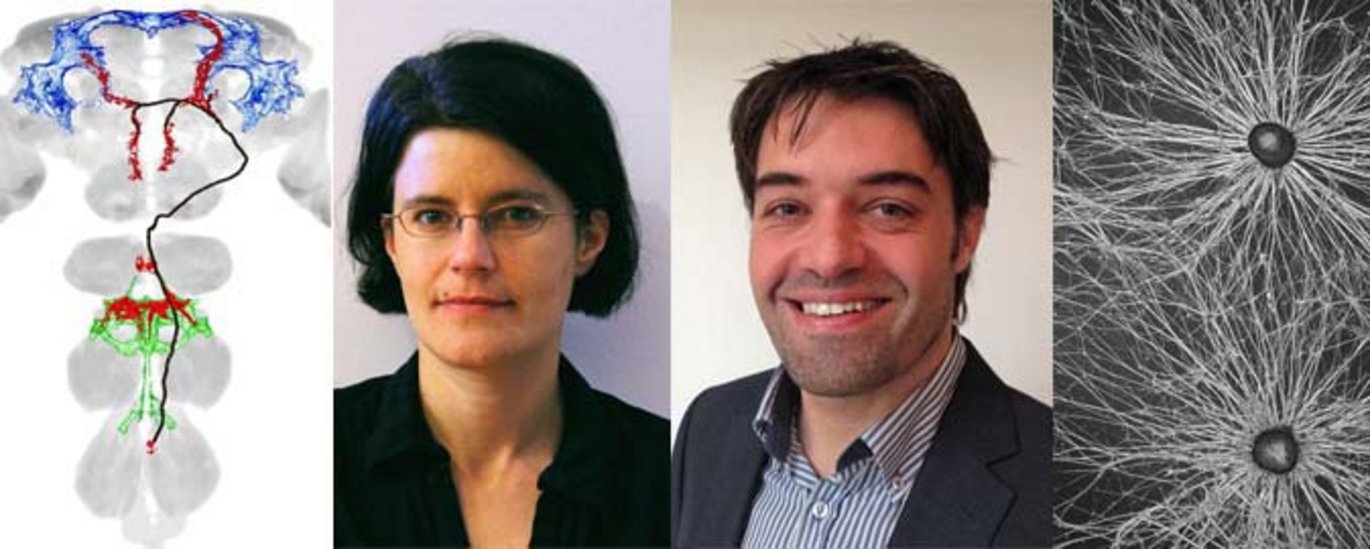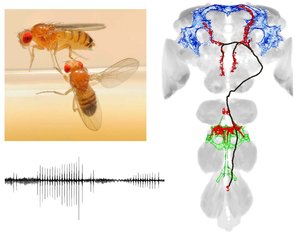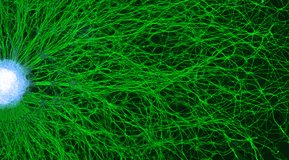DANDRITE appoints the first two research group leaders
DANDRITE has appointed Anne von Philipsborn and Mark Denham as Group Leaders. These appointments are the first two in a series of five group leaders to be employed at DANDRITE. Mark and Anne will start their research in December and January, respectively.

Anne von Philipsborn comes from the Research Institute of Molecular Pathology (IMP), Vienna, Austria. Her research focuses on how the nervous system generates and controls behaviour, using the fruitfly Drosophila as a model organism. Future work will include using Drosophila as a model system for understanding molecular and cellular aspects of neurodegenerative diseases.
Mark Denham comes from the Department of Medical Biochemistry and Biophysics, Karolinska Institute (KI), Stockholm, Sweden, and prior to this the University of Melbourne, Australia. He is working with human embryonic stem cells and induced pluripotent stem cells to study how the nervous system develops and the processes involved in neurodegeneration. Future work aims at using mesencephalic dopaminergic neurons as an in vitro model for studying the mechanisms that underlie the onset of Parkinson’s disease. Furthermore, the research will aim for translational and clinical medicine.
Detailed description of the two new group leader's research
|
and vibrating one wing (Photo: Solvin Zankl). Oscilligram of the fly song, consisting of pulse trains. The Drosophila central nervous system with three neuronal classes (blue, red, green), which control courtship behavior and song generation. | Anne von Philipsborn’s research: Drosophila circuit neuroscience and behavioral genetics laboratory How does the nervous system generate and control behavior? Neuronal circuits record, categorise and integrate sensory input, store information and coordinate motor output. Dissecting the basic mechanisms by which ensembles of neurons perform these various computational tasks is a pivotal aspect for understanding brain function in health and disease. The fruitfly Drosophila has a small nervous system, yet it performs a wide range of complex behaviours. Many features are shared with vertebrate brains. Neuronal circuits in the fly can be analysed at the cellular and molecular level with sophisticated genetic tools, making it a model organism of choice for circuit neuroscience. Anne von Philipsborn‘s research has mainly focused on male courtship behaviour. During courtship, male flies send an acoustic signal, the courtship song, by extending and vibrating one wing toward the female. She could identify sex-specific neurons which control and shape this behavior (von Philipsborn, A.C., Liu, T., Yu, J.Y., Masser, C., Bidaye, S.S., and Dickson, B.J. (2011). Neuronal control of Drosophila courtship song. Neuron 69, 509-522). Future work on this model behaviour and its underlying neuronal circuit will address general mechanisms for motor pattern generation, the development of sexual dimorphisms as well as sensorimotor integration and decision making. Furthermore, Dr. Philipsborn is interested in engaging in new collaborations at Aarhus University and in employing Drosophila as a model system for understanding molecular and cellular aspects of neurodegenerative disease. Research interests |
Human pluripotent stem cell derived neurosphere | Mark Denham’s research: Human pluripotent stem cell laboratory Pluripotent stem cell biology is one of the most rapidly advancing areas of medical research. The advancements are both in the types of cells being generated and their application for research and clinical purposes. The derivation of induced pluripotent stem (iPS) cells has further accelerated this progress with new opportunities now available to develop human in vitro models for studying diseases and as such, opening new potential treatment strategies in the form of cell replacement therapies and drug development. Mark Denham’s main interest is to use human embryonic stem cells and induced pluripotent stem cells to study how the nervous system develops and the processes involved in neurodegeneration. In particular, he is interested in the specification of mesencephalic dopaminergic neurons, the major cell type affected in Parkinson’s disease. He has developed a highly efficient protocol for generating mesencephalic dopaminergic neurons and his goal is to use this system as an in vitro model for studying the mechanisms that underlie the onset of Parkinson’s disease. Furthermore, he is also interested in investigating how these neural progenitors survive and function after transplantation in an adult rodent brain. |
About DANDRITE: http://dandrite.au.dk/
The Danish Research Institute of Translational Neuroscience – DANDRITE is the Danish node of the Nordic-EMBL Partnership for Molecular Medicine and adhere to the EMBL model for international recruitment.
DANDRITE is established with support from the Lundbeck Foundation at Aarhus University. The research scope is on molecular mechanisms underlying intra- and intercellular signaling networks that govern neuronal functionality and circuitries and how these mechanisms define behaviour and are altered in neurological and psychiatric disorders.
DANDRITE is embedded in the vibrant NeuroCampus research community at Aarhus University and Aarhus University Hospital and encompasses genetics, molecular and clinical medicine, bioimaging, cell and animal modeling, structural biology and nanoscience, and with long-standing traditions in membrane proteins and neuroscience.
DANDRITE encompasses a thriving, international research community with many PhD students and postdocs and with well-established research infrastructure and support. The three core groups at DANDRITE cover a broad range of neuroscience, including structural biology and electrophysiology of membrane transporters and receptors (Prof. Poul Nissen), molecular cell biology of intracellular signalling networks with focus on Parkinson disease and dementia (Prof. Poul Henning Jensen), and sorting/trafficking, trans-synaptic communication and signalling in nerve cells as mediated by sortilin receptors and studied in transgenic animal models (Prof. Anders Nykjær).
Further information
DANDRITE Group leader Anne von Philipsborn, Anne.VonPhilipsborn@imp.ac.at
DANDRITE Group leader Mark Denham, mark.denham@ki.se
DANDRITE Director and core member Prof. Poul Nissen, pn@mb.au.dk
DANDRITE Core member Poul Henning Jensen, phj@biokemi.au.dk
DANDRITE Core member Anders Nykjær, an@biokemi.au.dk
DANDRITE Administrative Officer Else Magård, ema@madalgo.au.dk


